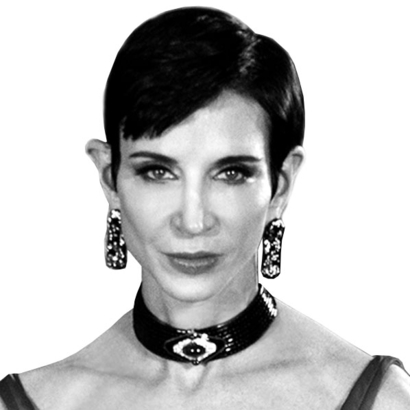For nine decades, the Italian couturier, interior decorator, garden designer, and connoisseur Federico Forquet—subject of Hamish Bowles’s definitive new monograph, The World of Federico Forquet—has been, as he lyrically puts it, “in tune with the pleasures of life.” The scion of an old Neapolitan banking family (they helped finance Italy’s railways and the Suez Canal), Forquet, by his own account, enjoyed a “peaceful” childhood in “a magical place,” a cliffside villa overlooking the Bay of Naples. Even his experience of World War II had its glamorous incidents—the American admiral who requisitioned the Forquet family house in 1943 invited Federico and his parents aboard his aircraft carrier to screen the latest Rita Hayworth, Carmen Miranda, and Betty Grable extravaganzas. By that point Forquet had already begun obsessively covering his schoolwork and his father’s bank statements with his precocious fashion sketches.
During the spring of 1954, Forquet—trained as a concert pianist and expected to succeed his father as manager of the family estates—serendipitously met Cristóbal Balenciaga on the island of Ischia. Having heard about the young aesthete’s drawings, Balenciaga, to the astonishment and envy of the fabled Spaniard’s entourage, in the fall asked Forquet to be his guest, first at his country house near Orléans, and then in his Paris apartment. Impressed with the croquis Forquet produced on demand for him, Balenciaga next employed the courtly 23-year-old to work alongside him at his Avenue George V studio, a privilege conferred on no other assistant.

After six seasons with Balenciaga, Forquet moved on to Rome, where in 1961 he opened his own couture house on the Via Condotti. His debut collection was an instant success; the first customer out of the gate was the Queen of Spain. Building on Balenciaga’s hybrid “Sultana” silhouette, Forquet originated a variant of evening trousers, christened “Palazzo Pyjamas” by an ecstatic Diana Vreeland. This seductive look, along with Forquet’s other daring styles, set the sartorial tone for Rome’s sybaritic dolce vita moment. Women’s Wear Daily’s John Fairchild duly coronated fashion’s new darling “Federico the Great,” and termed the Italian’s patrician clientele (Marella Agnelli among them) the “Young Arrogants.” But, in 1971, at the peak of his renown, Forquet did the unimaginable and shuttered his business. “If you create an empire,” he later explained, “you become an emperor. But I prefer being a private and happy citizen of the world.”
To the astonishment of the fabled Spaniard’s entourage, Balenciaga asked Forquet to be his houseguest in France that fall.
A year later, Forquet helped his muse and confidante Allegra Caracciolo Agnelli decorate her apartment. One of its more striking features was a jacquard fabric Forquet had custom-made to line the living-room walls. By chance, in the spring of 1973, Andy Warhol visited Allegra at home, where the Pop artist mistook Forquet’s sumptuous, pointillist textile for solid marble. Warhol’s unexpected response to his lush décor “changed his life,” the writer Marella Caracciolo Chia notes. Emboldened, Forquet that year embarked on a new calling as an interior designer, attracting clients from the same pool of Young Arrogants whom he had previously dressed.

His taste in this adopted profession proved to be as dreamily nostalgic and historicizing as his fashion sensibility had been up-to-the-minute and risqué. As with most interior designers, Forquet’s best projects were those he contrived for himself. The undisputed jewel in the crown of “Federico the Great” (as the book’s photos by Guido Taroni make clear) is Valle Pinciole, Forquet’s hilltop residence near the Tuscan town of Cetona. Just as he was guided in fashion by Balenciaga, so he had as a mentor for landscaping his property the master gardener Russell Page. “The romance of the place is overwhelming at times,” fellow garden designer Madison Cox writes of Forquet’s autobiographical Eden.
At Valle Pinciole, Forquet’s fashion archives and collections of recherché classical, neoclassical, Neapolitan, and ancestral objets d’art will be preserved in perpetuity by the Fondo Ambiente Italiano. Reflects Forquet, “When one day people will visit this place, I hope they will capture the essence of my message: No matter where life takes you, be sure to know and honor your past.”
Amy Fine Collins is an Editor at Large for Air Mail and a Special Correspondent for Vanity Fair. She lives in New York City


